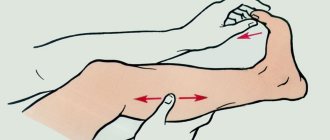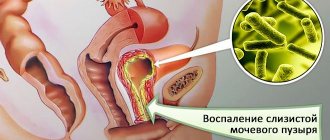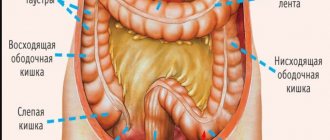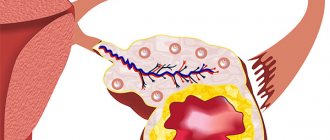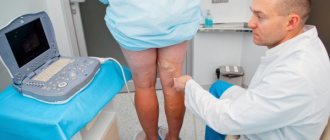Hallux valgus is a very serious orthopedic disease. At the same time, unsightly bumps are formed in the area of the base of the first toe, which are popularly called toe bunions.
In the medical world, such a pathology is called Hallus valgus, which literally translates from Latin as a bent first finger. But external deformity of the foot is not so bad.
The main danger is that such a foot deformation significantly increases the load on the knee, hip joints and spine, which provokes additional health problems.
What is the name of the bone on the side of the big toe?
Hallux valgus is a pathology in which the big toe is modified at the level of the metatarsophalangeal joint and deviates outward. The disease is also called hallux valgus.
The following symptoms are typical for valgus of the metatarsophalangeal joint:
- constant rubbing, roughening of the skin around the bone, formation of corns, dry calluses;
- evening heaviness, pain, tired legs.
As the disease progresses, the skin becomes inflamed, predisposing it to the development of infections. Its course is complicated by swelling in the lower leg at the ankle level and near the bump. If hallux valgus is left untreated, complications develop.
The deformation provokes excessive loads on other joints and the ligamentous-tendon apparatus of the leg. It is necessary to treat not only this disease, but also heel spurs, synovitis, and bursitis.
Causes of a growing and painful bone
A bunion on the big toe is formed due to wearing uncomfortable shoes, excess weight, and increased physical activity. But doctors believe that the main reason for the formation of compaction is increased elasticity of ligaments and tendons.
As the bump on the leg develops, it swells, hurts, and itches. In the absence of treatment, an inflammatory process develops, provoking the progression of the disease. With advanced grade 3 hallux valgus, the lump grows, and the person cannot lean on the foot due to pain.
It is impossible to completely get rid of the stone with medication, especially at the final stage. But there are other, more effective treatment methods.
Hallux valgus: what can this disease be confused with?
A specialist will always be able to recognize the reason why the bone on the side of the leg grows and hurts. But a person who has curvature of his toes will not be able to understand on his own why pain and discomfort develops in the area of the big toe. However, it is important to begin treatment for bowed toes promptly.
The main differences between hallux valgus and injuries, as well as joint syndromes that affect this area, are described below.
Valgus deformity
In the photo on the left is a healthy leg, on the right is a deformed one.
It occurs due to a hereditary disorder of the structure of the arch of the foot, as well as disorders due to transverse flat feet, osteoporosis , weak ligaments, and overloads. A lump on the foot forms in the area of the first metatarsal bone and the base of the first phalanx of the toe. That is, a lump forms under the skin - a protruding head of the phalanx. It is dense, does not move under the skin, and is not fused to it. As a rule, the skin over the bump remains unchanged, its temperature and humidity are normal.
Pain begins to bother you in the second stage of the disease during exercise, and in the third stage it appears constantly.
Gout
Develops due to a violation of uric acid in the body. It is gradually deposited in the tissues, causing an inflammatory process.
The bunion occurs as an inflammation of the metatarsophalangeal joint of the first toe. At the same time, the skin and joint swell, and mobility is limited. The skin above the swelling is red and hot.
The patient feels severe attacks of pain, which gradually subsides after a few days. If you feel the joint, pain occurs.
Deforming osteoarthritis
The disease develops as a result of degenerative-dystrophic changes in the cartilage of the metatarsophalangeal joint of the first toe. The bunion develops, affecting the cartilage and bone heads near the metatarsophalangeal joint of the big toe. However, there are no changes on the skin. Joint mobility decreases. At a late stage of the disease, its form changes greatly.
Patients with osteoarthritis experience pain after exercise or in the evenings.
Rheumatoid arthritis
This disease is associated with an autoimmune process. The joint of the first finger is affected, and the inflammation is combined with inflammatory processes in the knee and hip joints, ankles, and hand joints. The joints are affected symmetrically, they swell, and there is pain during palpation. Their mobility is impaired. The pain bothers me in the morning, and joint stiffness is also noted in the morning.
Psoriatic arthritis
With this disease, arthropathy , provoked by taking medications for hypertension, smoking, and stressful situations. Psoriatic arthritis affects the first toe, limiting its mobility and causing swelling. The skin near the joint turns red or blue. With this disease, not only the bone on the foot near the big toe hurts, but also the joints of the fingers on the hands are affected. As a result, the fingers swell and resemble sausages.
With psoriatic arthritis, the bone on the side of the leg hurts both during exercise and at rest.
Fracture
When fractures occur, the configuration of joints and bones is disrupted. If a fracture of the bone of the first toe or metatarsal bones occurs, the shape of the joint and bones changes. There may be movement of bone fragments under the skin. A characteristic crunch may also be felt. The fracture site hurts both at rest and during movement, when the pain intensifies significantly.
Where to start treating a bunion on the big toe
It is advisable to begin treatment of a bunion on the big toe with a visit to the doctor . After an external examination of the deformed joint and foot, he will prescribe instrumental examinations. The most informative of them is radiography.
X-ray of protruding bones.
If, after studying the images taken in three projections, the doctor still has doubts, then a computed tomography scan of the leg is performed. The study allows us to exclude other pathologies, the symptoms of which are inflammation and swelling of the skin.
Which doctor should I contact?
An orthopedic traumatologist deals with the treatment of a hallux valgus bunion . This is a highly specialized doctor whose responsibilities include examining the patient and providing consultation.
If you have any doubts about the nature of the disease of the thumb, you should contact a general specialist - a therapist . He has all the diagnostic skills to treat a bunion on your big toe. After the X-ray is completed, the patient will be referred to an orthopedic traumatologist for therapeutic measures.
Recovery period after surgery
Typically, recovery after surgery lasts about 4-6 weeks.
Immediately after the operation, the patient is prescribed anti-inflammatory and painkillers, as well as the use of compression stockings to prevent thrombosis .
When a patient is just starting to walk after surgery, they may need a cane or crutches. Later, throughout the entire rehabilitation period, you need to wear orthopedic pairs of shoes, practice massage, and special gymnastics.
Every person who has noticed pathological changes in the thumb area should see an orthopedist as soon as possible. The sooner treatment for the disease is started, the less money and effort will have to be spent on the path to recovery.
Treatment of a bunion on the leg without surgery
The lump at the base of the first finger can be treated conservatively if it is small in size. In adults, it is impossible to reduce it due to the formation of ossification centers, but it will be possible to prevent enlargement.
Since it is not possible to treat a bunion quickly, all therapeutic methods are used. This is the only way to successfully combat valgus and stop the destruction of the metatarsophalangeal joint of the foot.
How to remove bunions from your big toes using conservative treatment:
- wearing orthopedic devices;
- conducting physiotherapeutic procedures and massage sessions;
- use of effective folk remedies.
You can get rid of bumps on your toes using a set of measures. This treatment will prevent the growth on the leg from increasing in size and will prevent a lump from appearing on the other foot.
How does the disease develop?
These reasons cause a displacement of the main support points of the foot, due to which the body weight is distributed unevenly, exerting the greatest pressure in the area of the metatarsophalangeal joint. An asymptomatic subluxation occurs in this joint, the main clinical manifestation of which is some bone “bulging” on the inner surface of the foot.
Over time, the subluxation is injured, which triggers the processes of bone formation - a bone (or cartilage) growth is formed - a “bump”. The big toe deviates outward, overlapping the other toes. The result is a significant curvature of the foot, which leads to functional and aesthetic problems.
Often the pathology is accompanied by an internal deviation of the little finger – “tailor’s foot”. Shoes with narrow toes and/or unstable heels provoke such deformations. Such styles are characterized by inadequate pressure distribution with its maximum at the base of the fingers. For the same reason, ballet dancers, figure skaters and top models are susceptible to curvature of the thumb and little finger.
How to get rid of pits at home
A patient with a lump on the joint on the inside of the foot is hospitalized only if it becomes infected. In other cases, effective treatment is carried out at home. To remove a growth protruding from the side of the thumb, you should follow medical recommendations .
During treatment, it is strictly forbidden to wear tight shoes that squeeze the foot, especially high heels. Do not steam the lump on your thumb in very hot water or remove it with a pumice stone or a scraper.
What to do for pain and how to relieve swelling
Shark oil cream suppresses pain and inflammation in the joint.
A soft lump on the outside of the foot usually indicates the formation of severe swelling. After taking diuretics, the bone on the toe does not swell, and the feet and ankles do not swell. How to treat hallux valgus and what external medications to use depends on the leading symptoms.
Orthopedists prescribe the following medications to patients in the form of ointments:
- Troxevasin, Troxerutin, Lyoton to improve blood circulation and provide the damaged thumb with bioactive substances;
- Lump Stop, Valgusstop, maclura-based ointments that help partially resolve the tumor on the foot;
- Diclofenac, Nimesulide, Ortofen eliminate pain.
Getting rid of the infection involves the use of antibiotics in the form of ointments. Levomekol with chloramphenicol and the regeneration stimulator methyluracil has proven itself well in the treatment. Read more about ointments in our review.
Orthopedic means to prevent the bone from growing
Although bunions will grow without treatment, surgery is not necessary. In the early stages of the disease, wearing orthopedic shoes will help. Its heel is made of dense material, and its flexible sole provides excellent shock absorption when walking.
The following orthopedic devices are used in the treatment of thumb valgus :
- insoles equipped with sides to prevent foot displacement;
- interdigital separators inserted from above to prevent skin chafing;
- silicone or gel inserts for the bone, the wearing of which prevents the formation of corns and dry calluses on the thumb;
- soft bandages that protect the skin of the foot from irritation and roughness;
- semi-rigid correctors with hard inserts for retracting the thumb to the side.
If the bone protrudes strongly, then wearing a rigid valgus splint is indicated. It is necessary to eliminate the deviation and place the thumb in an anatomical position.
How to reduce a bump with massage
Massage helps stop the growth of a lump on the leg. Both women and men want to get rid of an ugly knuckle. Regular massage will significantly improve the condition of the thumb.
At the preparation stage, take a relaxing foot bath. Then they wipe their feet dry and begin to perform the following movements:
- stroking for 10 minutes;
- claps, vibrations, slaps for 15 minutes;
- Knead the skin over the bump for 10 minutes.
They massage the entire foot, and not just the bone that sticks out on the side of the leg. During treatment, cosmetic oils, baby cream, and Vaseline are used. But the most effective is Dikul’s massage balm with chondroprotectors.
Video: Massage and taping of the bunion on the big toe.
How to fight with folk remedies
In preparation for a massage of the cone and as a folk treatment for the bones of the big toe, take a relaxing foot bath with herbal infusions of thyme, lemon balm, mint, essential oils of thuja and cypress spruce.
It's easy to prepare:
- Pour a tablespoon of dry plant material into a glass of boiling water and leave for an hour.
- Strain and add to a bowl with 3-4 liters of warm water.
- Take a bath for half an hour, wipe your feet dry, and lubricate them with nourishing cream.
Get rid of swelling on the bones with ointments. 50 g of petroleum jelly or fatty baby cream is mixed with 2 drops of essential oil of juniper, spruce, thuja, and pine. By regularly rubbing the products into the bump, the skin above it stops swelling and inflaming.
Read more about treating lumps with traditional methods in the article at the link.
Recommended Diet
Diet is part of the treatment. it prevents the enlargement of the cone and prevents it from popping out on the second foot. What should the patient’s diet consist of:
- low-fat cheeses, other fermented milk products;
- omelettes, vegetable and cottage cheese casseroles;
- biscuits, savory cookies, caramel;
- fresh vegetable salads.
You can improve the taste of dishes by adding thin homemade tomato or sour cream sauces. Fruits are allowed to be consumed fresh or baked.
Treatment with ointments
Treatment of hallux valgus on the feet with folk remedies must be combined with the use of medications. The pharmacy offers a wide selection of effective medications that are designed to relieve symptoms of arthrosis of the metatarsophalangeal joint. NSAID-based ointments can help cope with severe pain and swelling:
- Nise.
- Voltaren.
- Ketanov.
- Fastum gel.
For bone resorption, Espol cream with capsicin is used. The drug has a local irritant, warming effect, and relieves aching pain.
Viprosal ointment with snake venom helps to get rid of discomfort: the remedy is quickly absorbed from the surface of the skin, anesthetizing the joint within 15–20 minutes.
Shark oil ointment with horse chestnut and willow bark
You can remove bumps on your legs by regularly using natural gel made from shark oil with the addition of plant extracts. The drug improves microcirculation in the joint, strengthens the walls of blood vessels, relieves swelling, and eliminates stagnation of blood and lymph. The use of the cream for preventive purposes is recommended when corns begin to appear on the soles, legs become very tired at the end of the day, spider veins form, and signs of varicose veins.
Cream "Shishka-Stop"
This ointment for painful bones on the lower extremities contains shark oil, laurel extract, cinquefoil, fucus, red pepper, essential oils of juniper, corn, lavender, camphor, fir and formic acid. The drug quickly relieves pain in the legs, reduces inflammation and swelling, increases blood flow to the affected tissues, and prevents destruction and deformation of the joint.
How to remove a protruding bone surgically
Operation on the thumb joint.
When the lump begins to grow very quickly, and conservative treatment is ineffective, surgical intervention is required. This is the only effective method of treating bunions in adults.
Surgical methods for treating bunions on the foot:
- Minimally invasive surgery. Under X-ray control, the bones of the metatarsophalangeal joint are filed down and the growth is removed.
- Osteotomy. It is performed in an open way with dissection of the skin on the leg and the joint capsule.
At the postoperative stage of treatment, a swelling of the finger forms due to the accumulation of exudate, and pain occasionally occurs. To eliminate symptoms, analgesics and decongestant ointments are used. More details about operations and rehabilitation after them are described in a separate article.
Correction of bunions using shock wave therapy
A lump on the leg can also be treated with shock wave therapy, or by short-term exposure of tissue to low-frequency acoustic pulses. During the procedure, bubbles are formed, which, when collapsed, destroy the bone growth. The course consists of 7-10 sessions with mandatory 5-day breaks between them.
If the lump is large, repeated treatment with shock wave therapy will be required . Orthopedists recommend repeating the procedure after 3-6 months. The list of contraindications to bone therapy includes tumor malignant processes, blood clotting disorders, and acute infectious processes.
Preventing the appearance of bunions in the thumbs
A growth (bone) on the leg appears as a result of the development and progression of serious diseases - arthritis, arthrosis deformans, gout. Therefore, their timely, comprehensive treatment is required. Protrusion of the bone is also caused by insufficient intake of calcium from food, which is necessary for the absorption of vitamin D3. It is necessary to take additional medications with these bioactive substances, for example, Calcium D3.
Prevention of bunions involves selecting shoes and reducing periods of long periods of standing on your feet. A person who is predisposed to the formation of a lump or joint deformation needs to use orthopedic insoles. High-heeled shoes should be avoided.
Diagnosis of the disease
A doctor can diagnose the disease based on an external examination of the foot. At this time, attention is paid to the formation of a seal in the area of the big toe joint, changes in the structure of the ankle and deviation of the heel. In order to confirm the correctness of the diagnosis you need to do:
- plantography;
- radiography of the feet;
- podometry.
All these studies are necessary to identify the cause of the disease, as well as the extent of the disease.
Patients who have been diagnosed with paralytic joint deformity are referred for consultation to doctors who work in the field of neurosurgery and neuralgia. As a result of detection of malfunctions in the endocrine system, the patient is also examined by an endocrinologist. If you suspect osteoporosis, you need to:
- densitometry
- double radiography
- photon absorptiometry.
